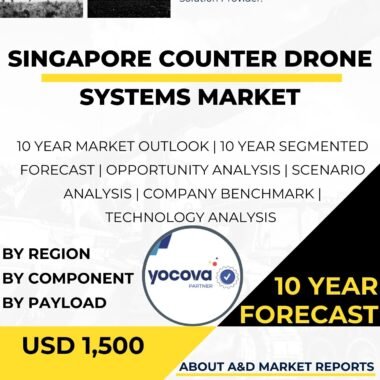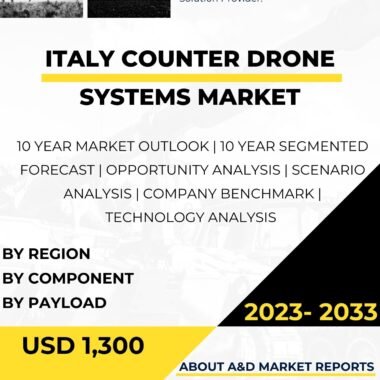Description
Australia Counter Drone Systems Market Overview
The Australia Counter Drone Systems Market is a fast-growing and essential part of national security. As drones become cheaper and more accessible, the risk of misuse also increases. Rogue drones can be used for spying, smuggling, terrorism, and other harmful activities. To counter these threats, Australia is investing in systems that can detect, identify, track, and neutralize unauthorized drones across critical areas such as airports, public events, military bases, and urban locations.
Key Drivers of the Australia Counter Drone Systems Market
1. Rising Drone-Related Security Risks
The number of drone incidents has increased in recent years. Unauthorized drones can threaten national security, public safety, and privacy. This has created strong demand for effective countermeasures.
2. Rapid Growth of Civilian and Commercial Drone Use
Drones are now widely used for photography, deliveries, inspections, and agriculture. While these uses are legal, the high availability of drones allows malicious actors to exploit them for illegal activities. This trend drives the adoption of counter drone technologies.
3. Protection of Critical Infrastructure
Critical facilities—such as airports, power plants, military bases, and government buildings—are vulnerable to drone intrusions. Counter drone systems help secure these areas by creating safe, monitored airspace and preventing disruptions.
4. Security for Major Public Events
Large events such as sports games, concerts, and political gatherings face drone-related risks. Counter drone systems provide an added layer of protection by preventing unwanted drone activity around crowds.
Applications in the Australia Counter Drone Systems Market
1. Detection Systems
Detection systems identify the presence of unauthorized drones. They use radar, RF scanners, acoustic sensors, and optical cameras to sense drone activity and alert security teams.
2. Identification Systems
These systems determine the drone type and model. Identification helps assess threat levels and guides security responses. Techniques include RF fingerprinting, visual recognition, and database comparison.
3. Tracking Systems
Tracking systems monitor the drone’s movement in real time. They predict its path and help operators understand its intent, especially if it enters restricted zones.
4. Mitigation Systems
Mitigation systems neutralize dangerous drones. They use RF jamming, GPS spoofing, lasers, or physical interception to stop the drone safely. These solutions must be used with caution to avoid collateral damage.
Technological Advancements in the Australia Counter Drone Systems Market
Recent advancements include:
-
AI-powered threat analysis
-
Multi-sensor fusion for accurate detection
-
Enhanced radar and RF scanning capability
-
Portable and mobile counter drone units
-
Long-range drone identification tools
These improvements help Australia stay ahead of new drone threats.
Challenges in the Australia Counter Drone Systems Market
1. Fast-Changing Drone Technology
Drones are becoming more advanced, with longer ranges, higher autonomy, and stealth features. Counter drone systems must evolve quickly to remain effective.
2. Widespread Drone Availability
As drones become cheaper, more people can access them. This increases the risk of misuse and requires scalable, cost-effective countermeasures.
3. Cybersecurity Risks
Counter drone systems rely on sensitive data and advanced software. Strong cybersecurity protections are necessary to prevent hacking or system disruption.
Future Outlook for the Australia Counter Drone Systems Market
Demand for counter drone technology will continue to grow. Rising drone use, evolving threats, and stricter security requirements will drive investment in advanced systems. Strong cooperation between the government, industry partners, and research institutions will shape the next generation of counter drone capabilities.
Conclusion
The Australia Counter Drone Systems Market is vital for national security and public safety. These systems help detect, identify, track, and neutralize rogue drones in critical locations and public environments. As drone threats increase, Australia must continue to invest in research, innovation, and security solutions. Addressing challenges in technology development, affordability, and cybersecurity will strengthen the country’s ability to counter future drone threats.




